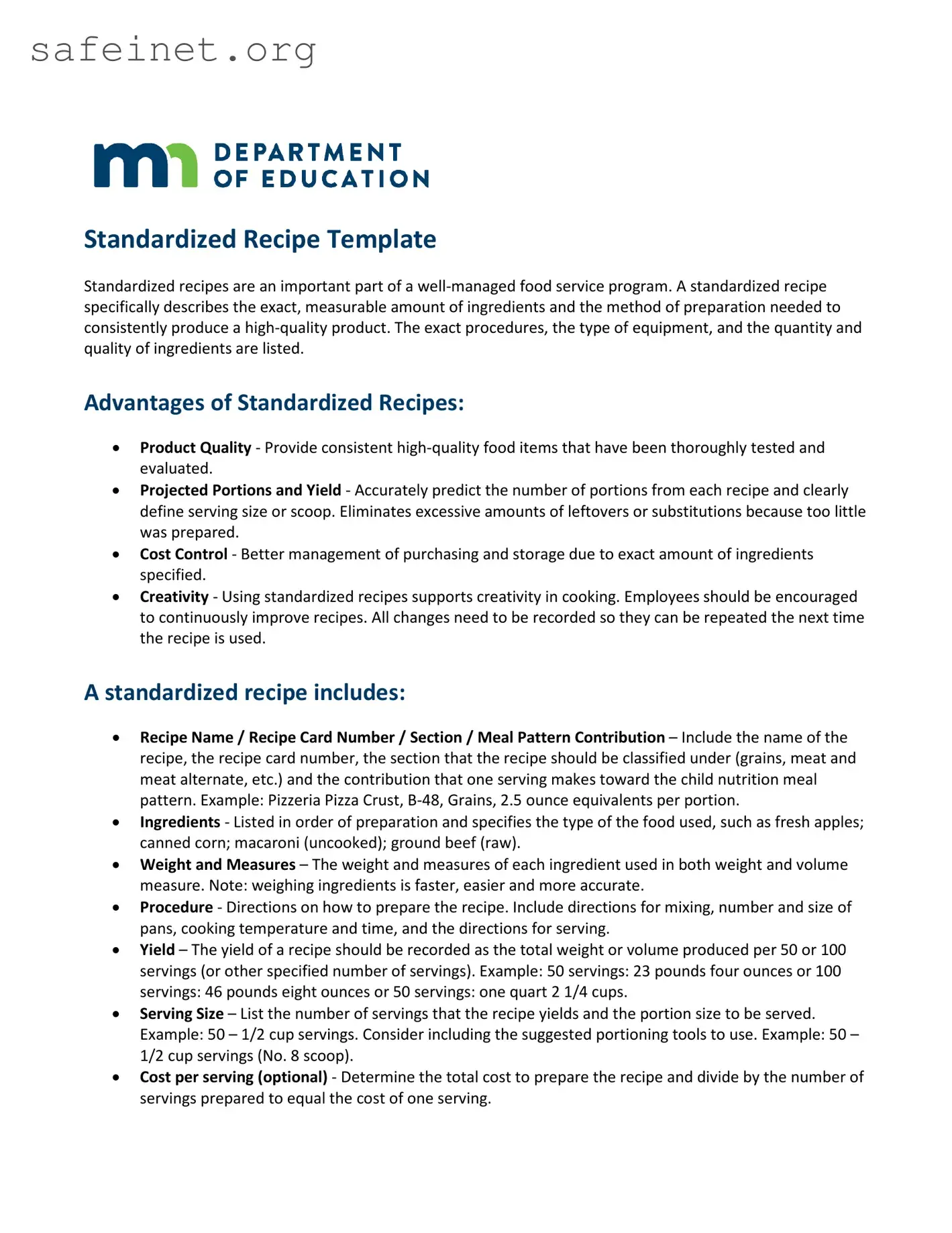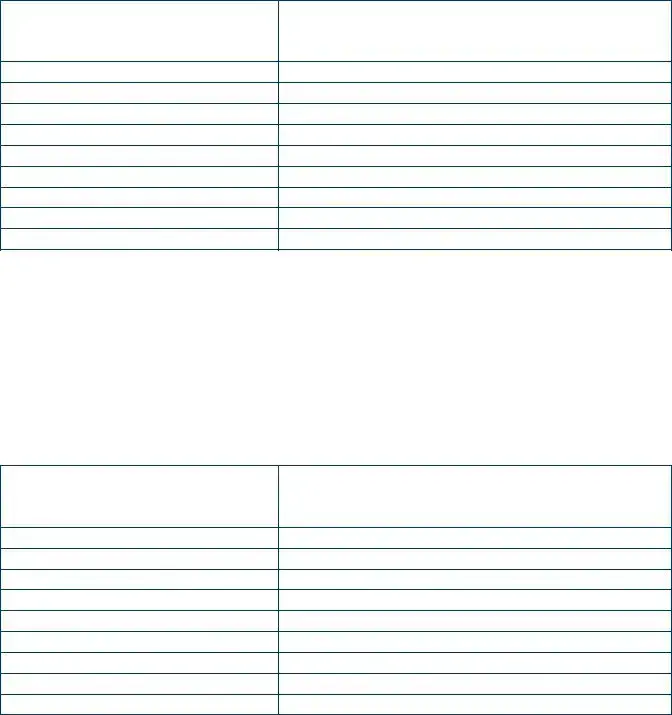Standardized Recipe Template
Standardized recipes are an important part of a well-managed food service program. A standardized recipe specifically describes the exact, measurable amount of ingredients and the method of preparation needed to consistently produce a high-quality product. The exact procedures, the type of equipment, and the quantity and quality of ingredients are listed.
Advantages of Standardized Recipes:
•Product Quality - Provide consistent high-quality food items that have been thoroughly tested and evaluated.
•Projected Portions and Yield - Accurately predict the number of portions from each recipe and clearly define serving size or scoop. Eliminates excessive amounts of leftovers or substitutions because too little was prepared.
•Cost Control - Better management of purchasing and storage due to exact amount of ingredients specified.
•Creativity - Using standardized recipes supports creativity in cooking. Employees should be encouraged to continuously improve recipes. All changes need to be recorded so they can be repeated the next time the recipe is used.
A standardized recipe includes:
•Recipe Name / Recipe Card Number / Section / Meal Pattern Contribution – Include the name of the recipe, the recipe card number, the section that the recipe should be classified under (grains, meat and meat alternate, etc.) and the contribution that one serving makes toward the child nutrition meal pattern. Example: Pizzeria Pizza Crust, B-48, Grains, 2.5 ounce equivalents per portion.
•Ingredients - Listed in order of preparation and specifies the type of the food used, such as fresh apples; canned corn; macaroni (uncooked); ground beef (raw).
•Weight and Measures – The weight and measures of each ingredient used in both weight and volume measure. Note: weighing ingredients is faster, easier and more accurate.
•Procedure - Directions on how to prepare the recipe. Include directions for mixing, number and size of pans, cooking temperature and time, and the directions for serving.
•Yield – The yield of a recipe should be recorded as the total weight or volume produced per 50 or 100 servings (or other specified number of servings). Example: 50 servings: 23 pounds four ounces or 100 servings: 46 pounds eight ounces or 50 servings: one quart 2 1/4 cups.
•Serving Size – List the number of servings that the recipe yields and the portion size to be served. Example: 50 – 1/2 cup servings. Consider including the suggested portioning tools to use. Example: 50 – 1/2 cup servings (No. 8 scoop).
•Cost per serving (optional) - Determine the total cost to prepare the recipe and divide by the number of servings prepared to equal the cost of one serving.
Recipe Name: _____________________________________________________ Recipe Number: __________
Section (Grains, Entrees, etc.): ________________________________________ Yield: __________________
Meal Pattern Contributions: __________________________________________ Serving Size: ____________
50 |
50 |
100 |
100 |
_____ |
_____ |
Servings |
Servings |
Servings |
Servings |
Servings |
Servings |
Weight |
Measure |
Weight |
Measure |
Weight |
Measure |
|
|
|
|
|
|
Procedure:
Recipe Name: _____________________________________________________ Recipe Number: __________
Section (Grains, Entrees, etc.): ________________________________________ Yield: __________________
Meal Pattern Contributions: __________________________________________ Serving Size: ____________
50 |
50 |
100 |
100 |
_____ |
_____ |
Servings |
Servings |
Servings |
Servings |
Servings |
Servings |
Weight |
Measure |
Weight |
Measure |
Weight |
Measure |
|
|
|
|
|
|


